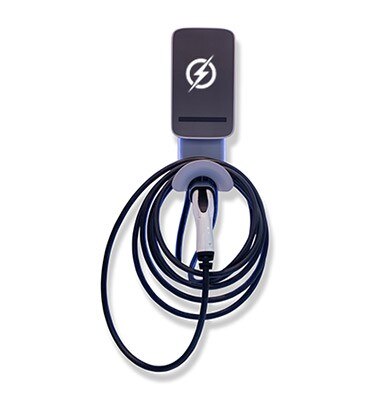Learn the basics of electric vehicles.
Enterprise Fleet Management is here to help you make sense of all the always-evolving EV landscape. We believe the first step is to help you and your drivers understand the key differences between ICEVs (internal combustion engine, or conventional vehicles) and the various types of EVs.
Types of vehicles.
ICEV – Internal Combustion Engine Vehicle: A vehicle with an engine that is powered by the burning of fossil fuel.
EV – Electric Vehicle: A catch-all term for any vehicle that uses electric motors.
BEV – Battery Electric Vehicle: A vehicle that operates only on battery-stored power.
FCEV – Fuel Cell Electric Vehicle: A vehicle that uses a fuel cell (typically hydrogen-based) to generate electricity that runs an onboard motor.
HEV – Hybrid Electric Vehicle: A vehicle that uses both an internal-combustion engine and electric motor.
PHEV – Plug-in Hybrid Electric Vehicle: A vehicle that uses both an internal combustion engine (ICE) and electric motor with batteries that recharge with an EV charger.
ZEV – Zero-Emission Vehicle: A vehicle that emits no tailpipe pollutants while driving.
Unusual things to know about EVs.
Frunk – Front Trunk: Some EVs have a storage area in the front where an engine is normally found. This can increase the utility of even smaller vehicles.
Range: The maximum distance an EV can travel before needing a recharge.
Regenerative Braking: An energy recovery system used in some EVs that helps recharge the battery while the car is slowing down. This can extend vehicle range and is sometimes called “one-pedal” EV driving.
Battery Degradation: EV batteries, just like cell phone batteries, lose their capacity over time. OEM battery warranties are typically for eight years or 100K miles, but battery life can be impacted by charging type or frequency.
Preconditioning: A process of heating or cooling the interior of an EV while it is charging to increase range. (Batteries are susceptible to temperature extremes.)
All about charging.
Electric Power Basics
AC – Alternating Current: The most common plugs in households and corporate offices. AC is an electric current that “alternates” between positive and negative flow.
DC – Direct Current: Providing a constant flow of electricity, DC is common in batteries and used to run electronics and electric motors and is used in the fastest EV chargers (see below).
Amp – Ampere: Refers to the rate of electric current flow (like the width of a pipe or hose).
Volt – A unit of measure of the force of electricity (like the amount of pressure in a pipe or hose). Typical household current in the US is 120V.
Transformer – A device that raises or lowers voltage.
Watt – a basic unit of power, which is equal to volts multiplied by amps.
kWh – Kilowatt-hour: A unit of energy equivalent to the energy transferred in one hour by one kilowatt of power. EV battery size is measured in kilowatt-hours, the equivalent of fuel tank capacity in ICEVs.
Utility Terms
TOU – Time of Use: In some areas and with some providers, utility rates vary based on the time of day to manage demand on and off peak.
V2G – Vehicle to Grid: This system allows an EV to communicate with the electrical grid to manage the flow of electricity to and from the vehicle.
Make Ready: A utility-sponsored program that prepares a charging site with the necessary electrical infrastructure for installing EV charging equipment.
Charger Terminology
EVSE – Electric Vehicle Supply Equipment: The technical name for an EV charging station, which allows for communication between the charger and the vehicle for safe energy flow.
Level 1 Charging (AC): The slowest or “trickle” charger that plugs into a standard household wall outlet (120V).
Level 2 Charging (AC): A slightly faster charger, which uses a specialized cord connected to a high-voltage household outlet (240V—similar to an electric dryer or oven).
Level 3 Charging (DC): The fastest and highest-powered method, with output ranging from 50kW up to 350kW.
Smart Charger: A charger connected to a cellular or Wi-Fi network that adds access controls and the ability to track and schedule charging.
Charging Rate: A general term referring to the speed at which a battery accepts electricity while being charged.
Plug/Connector Types
CCS – Combined Charging System: A connector that combines DC pins below an AC connector configuration—found on most BEVs.
CHAdeMO – Charge de Move: A round connecter for DC fast charging used by some Asian OEMs (e.g., Nissan).
J1772 – Also called a “J” plug and the most common as the North American standard for Level 1 and Level 2 (AC) charging.


